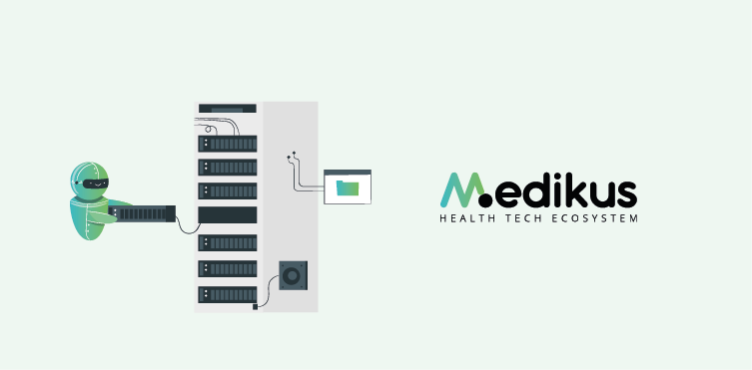Leading integration in the healthcare sector with Medikus and Jitterbit.
As healthcare providers face increasing complexities, Medikus Health Tech is taking a significant step forward by partnering with Jitterbit, known for its exceptional integration and automation solutions. This partnership promises to streamline workflows and optimize data management in the healthcare sector, offering a practical path towards improved decision-making and patient care. Overcoming technological barriers in healthcare Navigating the challenging and complex IT system in healthcare often creates inefficiencies that hinder the flow of crucial information. Our collaboration with Jitterbit directly addresses these challenges using their Harmony platform, which integrates various healthcare applications, both in the cloud and on-premise. This integration ensures continuous synchronization between essential systems, from billing to patient records, improving accuracy and operational efficiency. El papel de Jitterbit en la mejora de los servicios de Medikus La plataforma Harmony de Jitterbit no solo sincroniza datos, sino que también permite implementar integraciones rápidamente a través de su intuitiva interfaz sin código. Esto facilita que las organizaciones sanitarias se adapten a los cambios regulatorios y a las demandas del sector sin necesidad de una gran inversión técnica. Benefits for healthcare service providers The collaboration between Medikus Health Tech and Jitterbit brings significant benefits to healthcare service providers through advanced integration and automation technologies. Here’s how this partnership improves healthcare operations: Improved data accessibility and integration By connecting disparate healthcare applications, whether local or in the cloud, Jitterbit ensures that all critical data, from patient records to billing information, is seamlessly integrated. This holistic view supports better-informed decisions and improves continuity of care. Enhanced compliance with healthcare regulations Jitterbit’s flexible integration platform allows for rapid adaptations to new regulatory demands, helping healthcare service providers stay up-to-date with evolving regulations, minimizing the risk of non-compliance. Cost efficiency Automating repetitive tasks, such as data entry, reduces the need for manual labor, thus lowering operational costs. This efficiency not only saves money but also allows resources to be reallocated to more critical areas, enhancing overall productivity. Faster response to medical needs The efficient data flow enabled by Jitterbit integrations speeds up various healthcare processes, such as updating patient records and processing laboratory results, thus improving patient care and outcomes. Scalability of services As healthcare service providers grow, their IT infrastructure must scale accordingly. Jitterbit’s platform is inherently scalable, supporting healthcare facilities in their expansion without the need for significant additional IT investments. Customization and flexibility Jitterbit’s platform allows for extensive customization, enabling service providers to tailor integrations to their unique operational needs. This customization ensures that technological solutions are effective and address the specific challenges of each institution. A broader impact These technological advances not only contribute to more efficient operational management but also have a significant impact on the quality of care patients receive. By reducing administrative burdens, healthcare professionals can focus more on providing high-quality medical care. A look forward Stay connected with our blog for updates on how this innovative partnership is redefining the healthcare landscape. At Medikus, we are dedicated to pushing the boundaries of what technology can achieve in healthcare, ensuring that our solutions evolve with the needs of the professionals and patients we serve. In today’s healthcare environment, strategic collaborations like ours with Jitterbit are essential. By prioritizing integration and automation, Medikus Health Tech is helping to set new standards of excellence in healthcare.
Leading integration in the healthcare sector with Medikus and Jitterbit. Read More »






